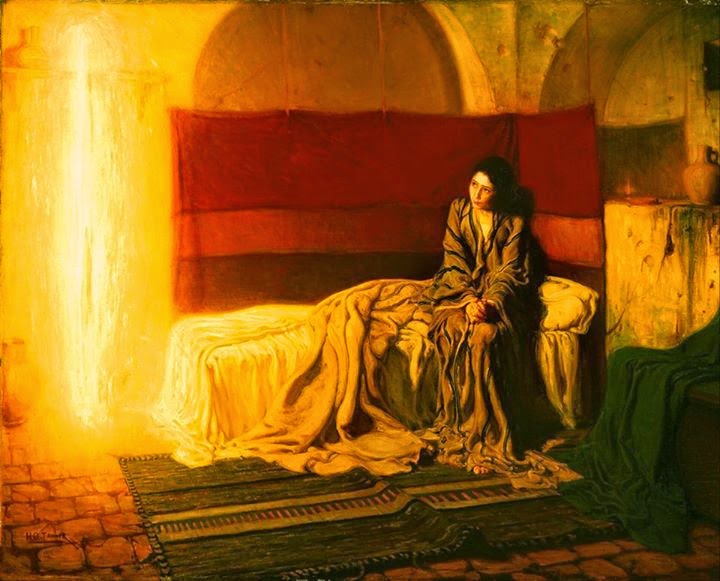No, we don't pray to Mary
Today is the Solemnity of the Annunciation, the historic
observance of the coming of Gabriel to Mary to announce her pregnancy. It is
observed exactly nine months to the day prior to Christmas.
It is somewhat shameful to admit this, but I grew up in a
tradition that placed little value on Mary other than the fact that she birthed
Jesus (and, of course, her virginity inspired many lessons about how true love
waits). In fact, throughout my protestant upbringing, our religious leaders
often led us to believe that Catholics “prayed to Mary” just like they did to
Jesus. And we were told how utterly wrong this was. The word “idolatry” was
even thrown around for effect.
In the intervening years, I have come to hold a much greater
appreciation for the person of Mary than my childhood pastors would prefer.
Actually, the more I think of it, my burgeoning understanding of Mary helped
inform my growing feminism. How could the very mother of Christ (one of few
women actually named in the Bible) be
so relegated to the sidelines of our understanding of the person of Christ?
Additionally, when I freed Mary from the sidelines, I became
aware that she also stood as a beacon in my journey toward claiming a theology
of liberation. The beauty of this is found in her decision to accept the message
Gabriel brings. In her faithfulness, she transforms into all those who are in
need of liberation from the oppression in our world, as explained by Rosemary
Radford Ruether:
“Mary is exalted because,
through her, God will work this revolution in history. Or, to be more accurate,
she herself is both subject and object of this liberating action. She makes it
possible through her act of faith, but the liberating action of God in history
liberates her. She herself embodies and personified the oppressed and
subjugated people who are being liberated and exalted through God’s redemptive
power. She is the humiliated ones who have been lifted up, the hungry ones who
have been filled with good things.”[i]
In January, I had the opportunity to visit an art exhibit at
the National Museum of Women in the Arts entitled Picturing Mary: Woman, Mother, Idea which included imagery of the
Mother in different medium. It was exceptional to see how Mary was portrayed
during the Renaissance and Baroque eras. I came away from the exhibit feeling
more fully connected to the person of Mary.
Much like with Christ, I have an image in my mind and heart
of who Mary was and is to me. I see her, scared and alone in a small stone
room. She is neither white nor swathed in pure white and blue. Her skin is not
smooth as porcelain, nor is she timid. She is young but strong, and she lifts
her eyes to meet the angel’s gaze with outward bravery she doesn’t quite feel
inside. And her humanity draws me even more to her mystery. So, no, we don’t
pray to Mary, but I cannot (and will not) deny her divinity and what she means
to my theology.
The Angel Gabriel from Heaven Came
By: Basque carol,
para. Sabine Baring-Gould, 1834-1924
The angel Gabriel
from heaven came,
With wings as drifted
snow, with eyes as flame:
"All hail to
thee, O lowly maiden Mary,
Most highly favored
lady." Gloria!
"For know a
blessed mother thou shalt be,
All generations laud
and honor thee;
Thy son shall be
Emmanuel, by seers foretold,
Most highly favored
lady." Gloria!
Then gentle Mary
meekly bowed her head;
"To me be as it
pleaseth God," she said.
"My soul shall
laud and magnify God’s holy name."
Most highly favored
lady." Gloria!
Of her, Emmanuel, the
Christ, was born
In Bethlehem all on a
Christmas morn,
And Christian folk
through-out the world will ever say:
"Most highly
favored lady." Gloria!
[i] Rosemary
Radford Ruether, Sexism and God-Talk:
Toward a Feminist Theology (Boston: Beacon Press, 1993), 155.

Comments
Post a Comment